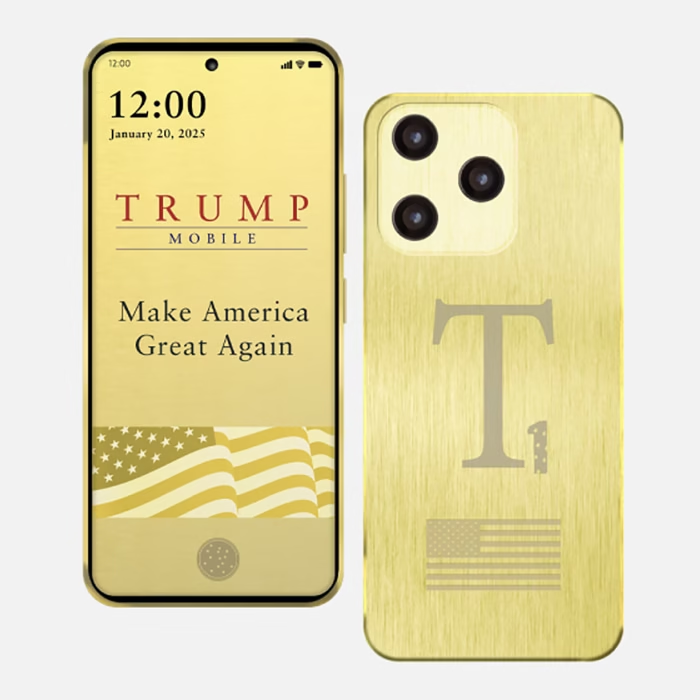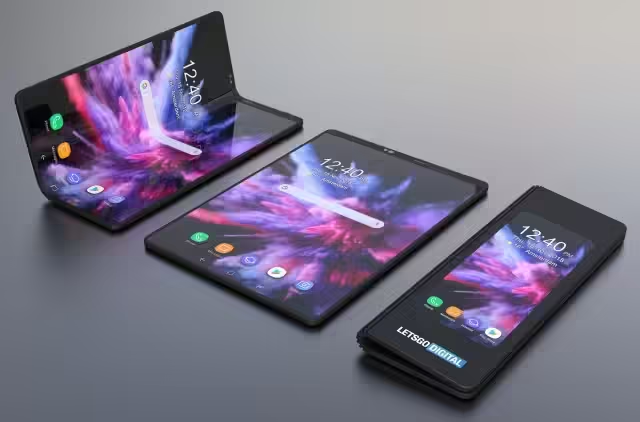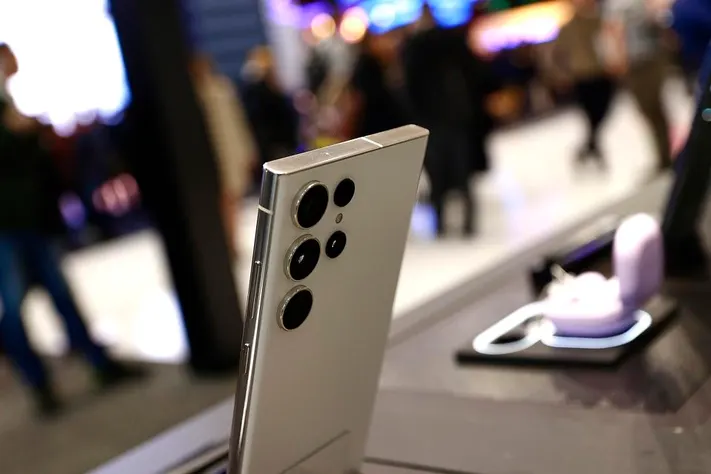Experts Question Trump Phone Manufacturing: Unpacking the T1, Service Cost, and “Made in USA” Claims
Estimated reading time: 8 minutes
Key Takeaways
- The Trump Organization has recently launched a new wireless service called *Trump Mobile* and an associated device, the T1 phone.
- The T1 phone is advertised at a price point of *$499* and is promoted with a prominent claim: that it is “Made in USA” or “built in the U.S.”
- The `trump mobile phone service cost` for their flagship “47 Plan” is set at *$47.45 per month* and includes unlimited talk, text, and data, marketed with no contracts or credit checks.
- Details regarding the `trump organization new phone t1 details`, particularly its technical specifications and precise origin of components, remain largely *undisclosed*, raising questions about its positioning relative to mainstream smartphones.
- Despite the branding and marketing, `experts question trump phone manufacturing` claims due to the complex, global nature of modern electronics supply chains, making it highly challenging and costly to produce a smartphone with “all or virtually all” U.S.-sourced components.
- Skepticism stems from the distinction between final assembly in the U.S. versus the actual manufacturing origin of core, high-tech components like processors and displays, which are predominantly produced overseas.
- The `$499 trump phone made in usa` price point itself is viewed by some analysts as difficult to reconcile with the significantly higher costs typically associated with genuinely U.S.-manufactured electronics, further fueling doubts about the extent of domestic content.
Table of contents
- Experts Question Trump Phone Manufacturing: Unpacking the T1, Service Cost, and “Made in USA” Claims
- Key Takeaways
- What is Trump Mobile Wireless?
- Trump Organization New Phone T1 Details
- Trump Mobile Phone Service Cost & Phone Price
- Examining the “Made in USA” Claim
- Why Experts Question Trump Phone Manufacturing
- Summary/Conclusion
- Frequently Asked Questions
In a significant move into the telecommunications sector, the Trump Organization recently announced the launch of *Trump Mobile*, a new wireless service promising a distinctly American approach to mobile connectivity.
Accompanying this service is a dedicated smartphone device, introduced as the *T1 phone*. This device enters the market with an advertised price tag of $499, positioning it as a potential competitor in the mid-range smartphone segment.

A central pillar of the T1 phone’s marketing is the bold assertion that it is “Made in USA.” This claim resonates strongly with the brand’s overall patriotic theme and appeal to a specific demographic.
However, this particular claim has immediately drawn scrutiny from industry professionals. Given the intricate and deeply globalized nature of modern electronics manufacturing supply chains, many experts question trump phone manufacturing origins regarding the T1 phone, suggesting that a truly “Made in USA” smartphone, meeting strict regulatory definitions, is an exceedingly complex and expensive endeavor.

The purpose of this blog post is to unpack these claims and provide a detailed look at what has been announced. We will explore the `trump mobile phone service cost`, delve into the available trump organization new phone t1 details, examine the specifics and implications of the $499 trump phone made in usa assertion, and explain precisely why experts question trump phone manufacturing process and the viability of its domestic manufacturing claims in the context of global tech production realities.

What is Trump Mobile Wireless?
At its core, what is trump mobile wireless? It is presented as a fresh entrant into the competitive U.S. mobile network operator space, spearheaded by the Trump Organization. The service aims to provide essential mobile connectivity while wrapping it in a distinct brand identity focused on American values and patriotism.
The service’s primary offering revolves around a promise of “unlimited calls, text and data,” a standard feature in many modern mobile plans designed to meet the growing demands of smartphone users for constant connectivity.
This unlimited plan is available at a specific monthly rate, which has been clearly articulated: the trump mobile phone service cost is set at $47.45 per month. This price point is intentionally branded as the “47 Plan,” a direct symbolic reference to Donald Trump’s position as the 47th U.S. president, reinforcing the personalized and politically-aligned nature of the brand. This specific pricing and naming convention is a key element of their marketing strategy, aiming to resonate deeply with supporters.
Key service terms highlight accessibility and ease of entry. The company states that there are “no contracts or credit checks required.” This approach contrasts with traditional carrier models that often involve long-term commitments and financial scrutiny, potentially appealing to a wider audience or those who prefer more flexible mobile solutions.
The targeting and positioning of Trump Mobile are overtly nationalistic. It is marketed explicitly towards a “patriotic audience,” emphasizing themes of American pride and economic support for domestic industries. The goal is not just to provide a wireless service but to make a statement. A notable aspect is their stated commitment to customer service, aiming to “have customer service by Americans for Americans.” This focus on domestic support staff is presented as a key differentiator and a tangible benefit linked to their patriotic messaging.
Beyond the core talk, text, and data, Trump Mobile also bundles additional features to enhance the perceived value of their plan. These include:
- Complete device protection, offering peace of mind against damage or loss for the associated phone.
- 24/7 roadside assistance provided via a partnership with Drive America, adding a practical utility unrelated to typical mobile service.
- Telehealth services, granting subscribers access to remote medical consultations, reflecting a growing trend in value-added service bundles.

In summary, Trump Mobile Wireless is presented as a strategic blend of a functional mobile service and a strong political statement. It aims to capture market share by appealing to a specific patriotic segment of the population, offering competitive unlimited plans, flexible terms, and bundled non-traditional mobile services, all while emphasizing American identity and employment. It’s positioned as both a practical choice for connectivity and an act of support for the brand’s associated values.
Trump Organization New Phone T1 Details
The unveiling of the Trump Mobile service was closely tied to the introduction of its signature device, the T1 Phone. This is the specific hardware being promoted alongside the wireless plan, and its characteristics are integral to the overall offering.
As mentioned, the trump organization new phone t1 details prominently feature its price: $499. This positions the T1 within the competitive mid-range smartphone market, a segment populated by numerous devices from various manufacturers offering a wide spectrum of features and performance for around this cost.

The most significant and attention-grabbing claim associated with the T1 phone is the assertion that it is “built in the U.S.” This claim is a cornerstone of the T1’s marketing and brand identity, attempting to set it apart from the vast majority of consumer electronics, including smartphones, which are predominantly manufactured or assembled in Asia. It directly ties the product to the patriotic themes of the Trump Mobile service.
Regarding its market positioning, the T1 is intended to function as a viable smartphone option for consumers who might otherwise consider devices from major industry players. While perhaps not directly competing with ultra-premium flagships from Apple or Samsung that cost upwards of $800-$1000+, it aims to be an alternative within the broadly accessible smartphone space, competing with devices in the $400-$600 range. The promotional material positions it as a functional, modern smartphone capable of handling contemporary tasks and connectivity needs. It needs to offer a user experience that justifies its price point in a crowded market.
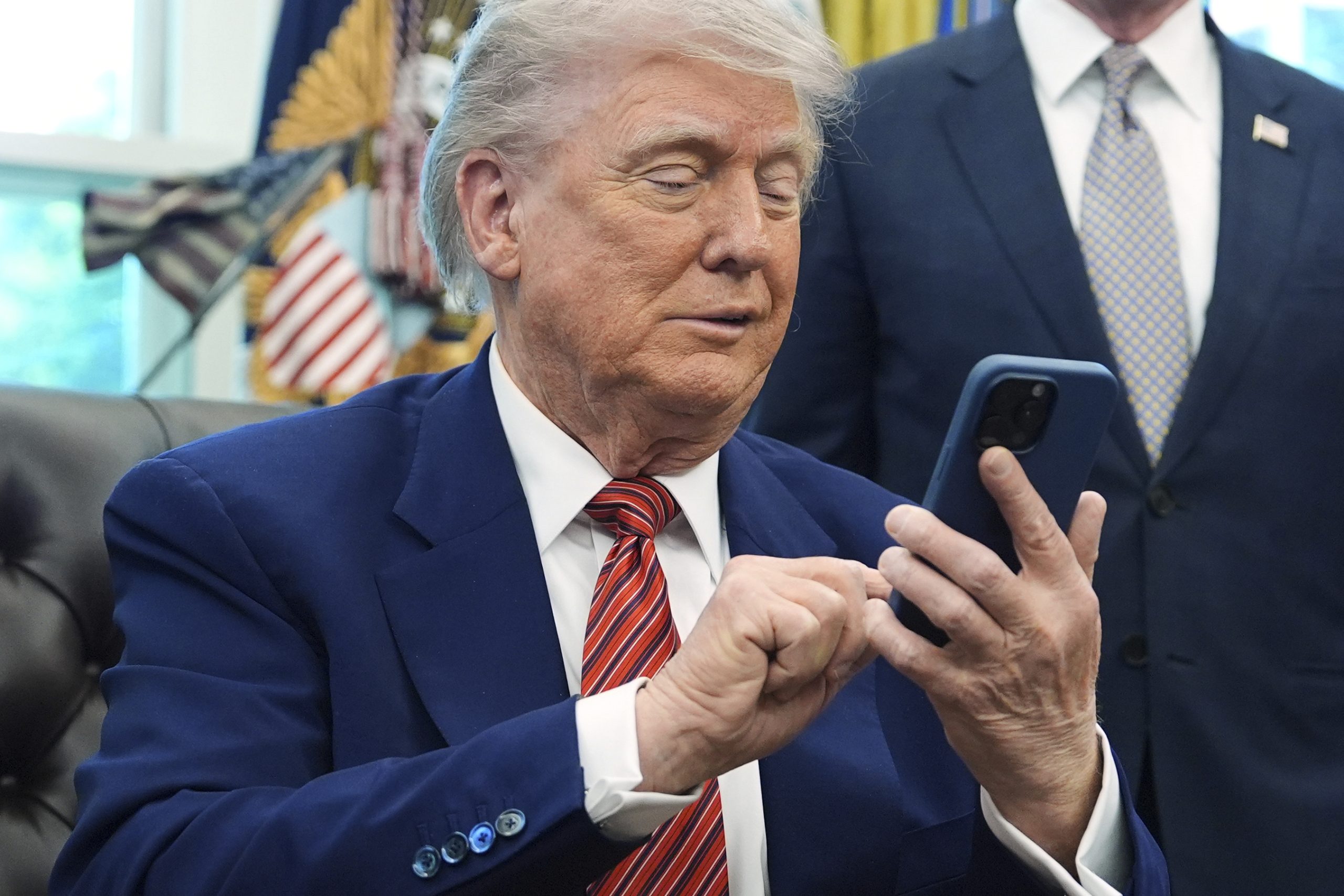
However, public announcements and promotional materials have been notably *sparse* on detailed technical specifications. Visuals of the T1 suggest a design consistent with current smartphone trends – likely a large touchscreen display, perhaps multiple camera lenses on the rear, and a modern form factor. But specifics regarding the processor (CPU), amount of RAM, internal storage capacity, camera sensor details, display resolution and type, battery size, and specific software features have not been widely publicized. This lack of detailed disclosure is somewhat unusual for a smartphone launch, as consumers typically weigh these technical specifications heavily when making purchasing decisions.
Understanding these technical details is crucial for evaluating the T1’s performance capabilities, potential lifespan, and overall value proposition relative to its competitors at the $499 price point. Without them, potential buyers and industry analysts are left to rely primarily on the device’s design and the brand’s marketing claims, particularly the highly emphasized “built in the U.S.” aspect. This information gap is one factor contributing to the broader questions surrounding the T1 phone.
Trump Mobile Phone Service Cost & Phone Price
Let’s reiterate the core financial aspects of the Trump Mobile offering. The trump mobile phone service cost for the main plan, aptly named the “47 Plan,” is $47.45 per month.
This monthly fee covers the essentials of modern mobile usage: unlimited talk, unlimited text messaging, and unlimited data usage. The “unlimited data” claim is standard in the industry, though typically subject to a fair usage policy or deprioritization thresholds by the underlying network provider, which is common across MVNOs (Mobile Virtual Network Operators) that lease network capacity from major carriers. The flexibility of “no contracts or credit checks required” simplifies the signup process compared to many traditional postpaid plans offered by the major network operators like Verizon, AT&T, or T-Mobile. This pricing structure and terms aim to be competitive within the prepaid or value-oriented segment of the wireless market.
Turning to the hardware, the price of the associated T1 phone is being marketed at $499. This is presented as the outright purchase price for the device.
It is critically important to note that the $499 trump phone made in usa price point is inextricably linked to the brand’s most significant assertion about the device: its claim to be “Built in the U.S.” This connection is a cornerstone of the marketing message. The implication is that despite being potentially more expensive to produce domestically, the T1 is offered at a competitive price point of $499 as a testament to supporting American industry while remaining accessible to consumers. This narrative is a key part of the brand’s appeal, aiming to justify the cost (which is moderate for a new smartphone but not “budget”) by highlighting its purported origin. However, this very price point, when viewed through the lens of typical manufacturing costs for complex electronics produced in high-wage economies, becomes a focal point for scrutiny and skepticism regarding the *extent* of its domestic production, as we will discuss further. The price is not just a number; it’s part of the controversial “Made in USA” story.

Examining the “Made in USA” Claim
The assertion that the $499 trump phone made in usa is “built in the U.S.” is a powerful marketing statement, particularly for a brand explicitly targeting a patriotic consumer base. This claim evokes images of domestic factories, American jobs, and a product whose entire creation process happens within national borders.
However, understanding the true weight of such a claim requires looking at the regulatory standards governing it. According to the Federal Trade Commission (FTC), a product can be advertised as “Made in USA” without qualification only if “all or virtually all” significant parts and processing are of U.S. origin. This is a stringent benchmark. It means that not only must the final assembly of the product take place in the United States, but the vast majority of the components that make up the product – especially the most significant or valuable ones – must also be manufactured domestically. Simply putting imported parts together in a U.S. facility generally does *not* qualify a product for an unqualified “Made in USA” label under FTC guidelines.
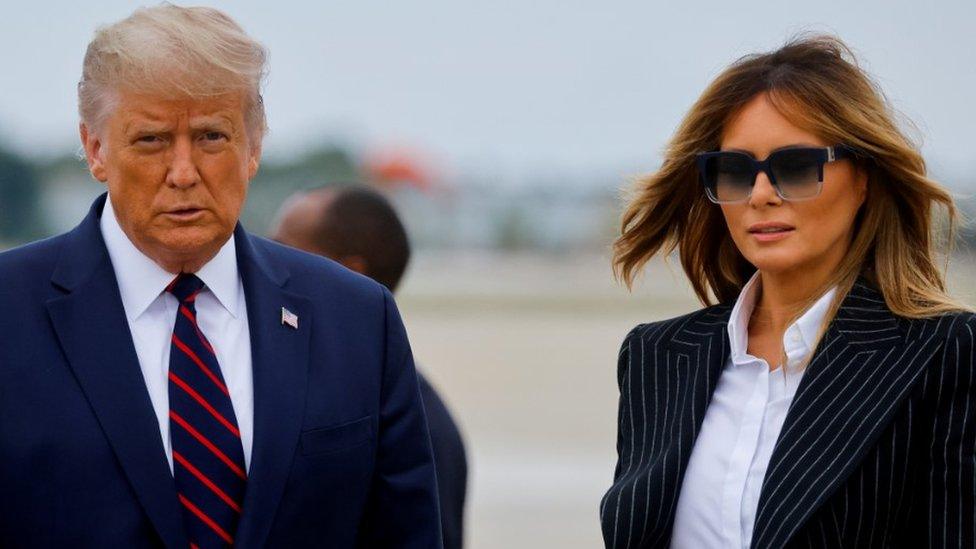
This brings us to a crucial nuance inherent in the Trump Organization’s claim: the use of the phrase “built in the U.S.” rather than the more legally defined “Made in USA.” While “built” often implies assembly, it *could* be interpreted in different ways legally and in marketing. The reality is that for complex electronic devices like smartphones, many essential components are manufactured in specialized facilities located outside the United States. These include critical parts such as:
- Semiconductor chips (the processors, modems, memory chips)
- Display panels (LCD or OLED screens)
- Camera sensors
- Batteries
- Complex circuit boards
Establishing domestic manufacturing capabilities for *all* or *virtually all* of these sophisticated components is a massive undertaking, requiring immense investment, specialized infrastructure, and a highly skilled workforce, none of which currently exist at the scale needed for mass smartphone production within the U.S. Therefore, even if the T1 phone undergoes its final assembly process in a U.S. factory, it is highly probable, bordering on certain for anyone familiar with the industry, that a significant proportion – likely the vast majority in terms of value and technological complexity – of its internal components originate from manufacturing hubs in Asia and other parts of the world.
This distinction between merely assembling a product domestically and manufacturing its constituent parts domestically is central to the skepticism surrounding the T1’s claim. Manufacturing experts are quick to highlight this gap, suggesting that the “built in the U.S.” claim, while potentially accurate in terms of final assembly location, likely does not meet the more rigorous “all or virtually all” standard typically associated with unqualified “Made in USA” claims, which implies a much deeper level of domestic production and sourcing. The wording itself seems carefully chosen, perhaps to allow for U.S. assembly while acknowledging the global reality of component supply.
Why Experts Question Trump Phone Manufacturing

The claim that the T1 phone is “built in the U.S.” has been met with significant skepticism from industry analysts and manufacturing experts. It’s not simply a matter of political opposition; the doubts are grounded in the fundamental realities of the global electronics supply chain and the specific challenges of smartphone production. Here are the primary reasons why experts question trump phone manufacturing claims:
Firstly, there is the undeniable reality of the **Global Supply Chain**. Modern smartphones are marvels of engineering, integrating thousands of components sourced from specialized manufacturers around the world. Building a phone requires access to highly advanced processors from Taiwan, intricate display technology from South Korea or China, memory chips from various Asian countries, camera sensors often from Japan or other global suppliers, and numerous other specialized parts like haptic motors, speakers, and connectors manufactured in diverse locations. The United States, while a leader in chip design and some specialized manufacturing niches, currently lacks the comprehensive, large-scale fabrication facilities (“fabs”) and component ecosystems required to produce *all* or even *most* of these critical components domestically at competitive volumes and costs. Even if the final step of putting these components together into a finished device happens in the U.S., the vast majority of the value and technological content often originates overseas. Experts point out that claiming a phone is “built in the U.S.” when its core components are entirely foreign-made stretches the common understanding of domestic manufacturing.

This leads directly to the second reason: the crucial distinction between **Assembly vs. Manufacturing**. The FTC’s standard is designed to prevent companies from labeling products “Made in USA” if they are merely assembled domestically using foreign-made parts. “Assembly” involves putting together pre-fabricated components into a finished product. “Manufacturing,” in the context of this debate, implies the creation of those components from raw materials or basic inputs. While it is entirely plausible, and perhaps the case, that the T1 phone undergoes its final assembly process in a facility located within the United States, this is a fundamentally different and far less complex process than manufacturing the sophisticated microprocessors, display panels, or camera modules themselves. Industry veterans understand this difference intimately and are skeptical that a new entrant could suddenly establish or access the necessary U.S.-based manufacturing infrastructure for critical, high-tech components required for a modern smartphone. The claim “built in the U.S.” likely refers to assembly, which falls short of the common expectation and regulatory definition of “Made in USA.”
Thirdly, the **Cost Considerations** are a significant factor. The $499 trump phone made in usa price point, while competitive in the global smartphone market, is considerably lower than what would typically be expected for a device manufactured predominantly in a high-wage country like the United States. Labor costs, regulatory compliance costs, and the sheer expense of building and operating advanced manufacturing facilities capable of producing intricate electronic components are significantly higher in the U.S. compared to traditional manufacturing hubs in Asia. While the total cost of a smartphone involves more than just manufacturing (including R&D, marketing, distribution, etc.), the manufacturing component itself would be substantially higher for a product where “virtually all” parts were U.S.-made. Analysts question how a company could absorb these higher costs and still offer a device at $499 unless the extent of U.S. manufacturing is limited, likely primarily to final assembly. This economic reality makes the claim harder for experts to believe at face value.
Finally, the **Lack of Detailed Disclosure** fuels skepticism. While figures within the Trump Organization, such as Eric Trump, have publicly expressed a desire to support American workers and “have phones built by Americans, for Americans,” the company has not released comprehensive documentation detailing the T1’s supply chain. Specifics about where components are sourced from, which U.S. facilities are involved (beyond potential final assembly), or third-party audits verifying the “built in the U.S.” claim have not been made available. Transparency is crucial for validating manufacturing origin claims, especially those that challenge established industry norms. Without detailed information on the percentage of U.S.-sourced components or the specifics of the manufacturing process in the U.S., industry analysts lack the verifiable data needed to confirm the extent of domestic production. This lack of transparency allows for speculation and makes it easier for experts, armed with knowledge of the global electronics industry, to raise doubts based on the prevailing realities of smartphone manufacturing.
These factors collectively form the basis for why `experts question trump phone manufacturing` claims. It’s a collision between marketing assertions and the complex, costly reality of producing advanced electronics in the 21st century.
Summary/Conclusion
In summary, the Trump Organization has made a notable entry into the mobile market with the introduction of Trump Mobile wireless service and the accompanying T1 phone. The service offers an unlimited plan at a monthly cost of $47.45, branded as the “47 Plan,” and includes additional features like device protection, roadside assistance, and telehealth, aiming to appeal to a patriotic consumer base with its “Americans for Americans” customer service pledge. This trump mobile phone service cost is presented as a competitive offer within the value segment of the market.
The T1 phone is being sold for $499, and its main selling point, beyond its functionality as a smartphone (details of which remain somewhat scarce), is the powerful claim that this $499 trump phone made in usa is “built in the U.S.” or “Made in USA.” This assertion positions the trump organization new phone t1 details as not just another device, but one embodying support for domestic manufacturing and labor.
However, as highlighted, the central point of contention and significant public and expert debate revolves around the veracity and interpretation of this “Made in USA” or “built in the U.S.” claim. The ambiguity in the wording, coupled with the strict definition of “Made in USA” by the FTC requiring “all or virtually all” U.S.-sourced content, places the T1’s claim under a microscope.
The prevailing view among industry analysts and experts is that experts question trump phone manufacturing claims primarily because the global nature of modern smartphone component production is a deeply entrenched reality. While final assembly *might* occur in the U.S., the fundamental components that constitute the majority of the device’s value and technological complexity – processors, displays, memory, sensors – are manufactured in specialized facilities predominantly located outside the United States. Producing a phone with “virtually all” U.S. parts would require an entirely different, currently non-existent domestic supply chain for these specific components and would likely result in a significantly higher retail price than $499.
Ultimately, the case of the T1 phone and its “Made in USA” claim underscores the importance of transparency from companies regarding their supply chains and manufacturing origins, especially when such claims are used as primary marketing features. As currently presented, the Trump Organization’s claims appear to lean heavily on branding and marketing alignment with a specific political stance rather than providing demonstrable, verifiable supply chain facts that would satisfy the scrutiny of manufacturing experts and fully align with strict “Made in USA” standards. This leaves significant questions lingering among industry observers and consumers about how genuinely “American” the T1 phone is in its entirety.
Frequently Asked Questions
- What network does Trump Mobile Wireless use?
While not explicitly stated by Trump Mobile, new mobile virtual network operators (MVNOs) typically lease network capacity from one or more of the existing major carriers in the U.S. (Verizon, AT&T, T-Mobile). The specifics of which network(s) Trump Mobile utilizes for coverage have not been widely disclosed, but it would rely on the infrastructure of a larger provider. - Is the T1 phone a high-end flagship smartphone?
Based on its $499 price point and the lack of detailed technical specifications released so far, the T1 phone is positioned as a mid-range smartphone, not a direct competitor to premium flagship devices from companies like Apple or Samsung which typically sell for $800 or more. Its exact performance and features relative to other mid-range phones are difficult to ascertain without more detailed specs. - Can I use my existing phone with Trump Mobile?
Typically, MVNOs allow customers to bring their own compatible, unlocked phones to the service. While the Trump Organization promotes the T1 phone, their website and promotional materials also mention that customers can bring their own devices to the Trump Mobile network, provided they are compatible. - Why is the “Made in USA” claim challenging for smartphones?
Manufacturing a smartphone involves a vast, global supply chain. Key components like advanced microprocessors, displays, and memory chips are predominantly manufactured in specialized facilities located outside the U.S. due to existing infrastructure, expertise, and cost structures. While final assembly can occur in the U.S., producing “all or virtually all” significant parts domestically is currently not feasible at scale and competitive cost, making a true “Made in USA” claim difficult to achieve under strict definitions. - What does the FTC’s “all or virtually all” standard mean for “Made in USA”?
The Federal Trade Commission (FTC) requires that for a product to be labeled “Made in USA” without qualification, all or virtually all significant parts and processing must be of U.S. origin. This means not just assembly, but the actual manufacturing of the components themselves should take place in the United States. Minor foreign-made parts might be permissible if they are negligible, but significant components must be domestically sourced.


